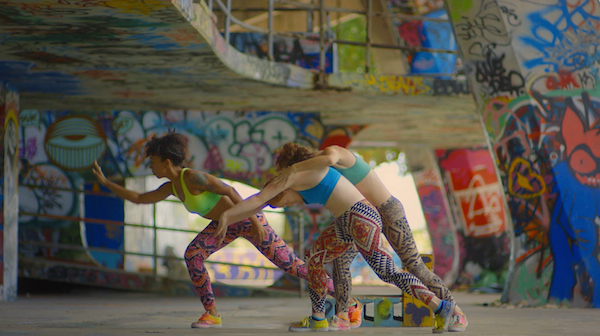
Hattie Mae Williams: Dancing to Miami’s History
By Fernando González, Miami-based arts and culture writer
For dancer and choreographer Hattie Mae Williams, the question is not whether all the world’s a stage but why shouldn’t it be?
She has taken her self-described guerrilla approach to dance performances to supermarkets and churches, subway platforms and cemeteries. “Culture Concrete,” her site-specific dance film project staged and shot at historic, and long-closed, Miami Marine Stadium, premieres Saturday, Nov. 15, at The LAB Miami in Wynwood.
“Culture Concrete” is part of Williams’ Miami Sites Project, a 2013 Knight Arts Challenge Miami winner. It includes not only dance and film but music, photography and installations. In fact, Williams and her company, The Tattooed Ballerinas, will dance at the showing of The Miami Sites Mini Episodes series, short videos featuring guerrilla dance performances at places such as Target and bus stops, at Miami Book Fair International on Nov. 21.
The project also includes plans to celebrate another historic place in South Florida, the 90-year-old Venetian Pool in Coral Gables.
The idea is not only to explore the history and current life of these places, but, as she puts it, “reclaiming and reframing spaces through site-specific/context-specific dance, film, photography and narratives.”
“I would really like for people to start looking at areas around them as their own performance platform,” says Williams. “I really want to motivate people into acting, being creative, and being open to ideas about art in public places and coming together. I hope this film, as we abstractly tell the story of the stadium and what happened there, can inspire people about telling their own life story.”
The 6,566-seat Miami Marine Stadium, which sits on Virginia Key, was designed by Cuban architect Hilario Candela as a venue for powerboat racing. It was dedicated on Dec. 23, 1963 and hosted a broad range of events on its floating stage — from boxing matches and music concerts to Sunday worship services. But city officials declared the stadium unsafe and closed it in September 1992 in the aftermath of Hurricane Andrew.
While it remains shuttered, the stadium was listed as one of the 11 Most Endangered Places in America in 2009 by the National Trust for Historic Preservation. The Getty Foundation recently awarded the Friends of Miami Marine Stadium $180,000 to help restore it.
“This is a community space, a place where people can gather,” says Williams, a Miami native and graduate of New World School of the Arts and the National YoungArts Foundation who returned to South Florida this year after 15 years studying and working in New York. “And the reason I wanted to do something there is that the local artist community kind of re-energized it, kind of made it their own gallery. That was intriguing … because in a sense that’s what I was doing in New York: guerrilla-style performances and film. So here you have graffiti artists doing their own guerrilla-style work … and you have the Friends of Miami Marine Stadium trying to get this reopened, doing their own sort of guerrilla movement, so I decided I had to do something here.”
To work on the piece, Williams visited the stadium several times and says that she saw it at first “as an awesome space, but then I also started to learn about its history.”
“I just sat in the space, I explored, and I looked at the shapes. I got a sense of what the vibe was. Certain areas underneath the stadium have a really heavy vibe,” she recalls. “I tried to get a sense of what happened and what is happening now: the empty spray cans, lots of trash, kids come and do whatever they do there. I approach the choreography by first looking at the shapes, the structure of the building and how the dancers can complement the negative spaces. And then for emotional context I look at the history, what happened there.”
The dance film “Culture Concrete” features Williams and her company — Katie Stirman, Melanie Martel, Iwalani Martin and Tarell Alvin McCraney — performing onsite. But because the stadium is still closed, there are liability concerns about having people attend a performance there. Instead, their performance was filmed “to document a time and a place, what’s happening now in Miami,” Williams says.
“That’s why film was so important for this specific project. The goal is to have a gallery showing where we can have the film up for a month and have installations of photography and pieces we’ve gathered from the place. We have a lot of material now.”
“Culture Concrete premieres at 8 p.m. Saturday, Nov. 15, at The LAB Miami, 400 NW 26th St. in Wynwood. Visit thetattooedballerinas.com for tickets and to learn more about Hattie Mae Williams and The Tattooed Ballerinas. Visit miamibookfair.com to learn more about their performance at Miami Book Fair International. Photo: Hattie Mae Williams dancers in “Miami Sites Project” at Miami Marine Stadium.
Recent Content
-
Artsarticle ·
-
Artsarticle ·
-
Artsarticle ·
